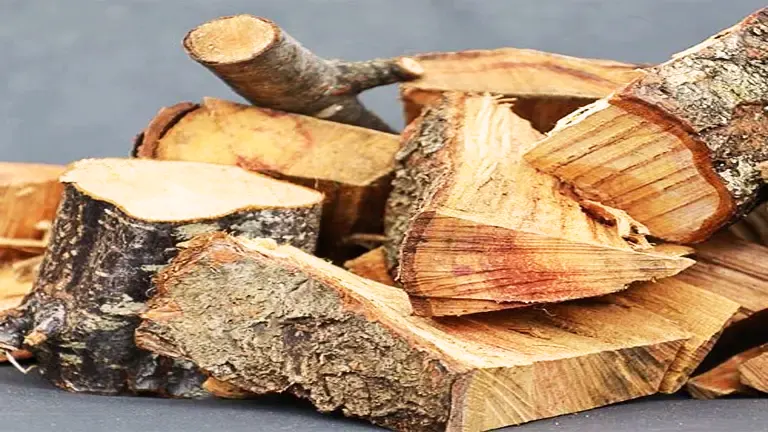American Plum Lumber
- August 3, 2023
- 0 comment
American Plum lumber, sourced from the American Plum tree (Prunus americana), is a captivating hardwood species native to North America. The heartwood showcases a range of light to medium reddish-brown hues, complemented by lighter-colored sapwood, often displaying a pale yellow tone. The wood’s fine and uniform texture, combined with straight grain, gives it a polished appearance, making it ideal for intricate woodworking projects.

While its smaller size limits its commercial availability and can lead to higher pricing, American Plum lumber is sought after for its versatility and use in various applications. Woodworkers favor this species for crafting small specialty items, such as turned objects and carvings, as well as for creating furniture, cabinetry, and interior trim. Though it lacks exceptional resistance to decay, proper protection and treatment ensure its longevity in suitable indoor projects.
American Plum, scientifically known as Prunus americana, is a deciduous hardwood species with an average dried weight of approximately 40 lbs/ft³ (640 kg/m³) and a specific gravity ranging from 0.64 to 0.68. With a Janka hardness of 1,910 lbf (8,490 N), the wood boasts a moderate to high level of strength and durability. Its modulus of rupture stands at 13,200 lbf/in² (91.0 MPa), while the elastic modulus measures 1,580,000 lbf/in² (10.90 GPa).
| Category | Information |
|---|---|
| Common Name(s) | American Plum |
| Scientific Name | Prunus americana |
| Distribution | Native to North America |
| Tree Size | Small to medium-sized, up to 20-30 ft |
| Average Dried Weight | Approx. 40 lbs/ft³ (640 kg/m³) |
| Specific Gravity | 0.64-0.68 |
| Janka Hardness | 1,910 lbf (8,490 N) |
| Modulus of Rupture | 13,200 lbf/in² (91.0 MPa) |
| Elastic Modulus | 1,580,000 lbf/in² (10.90 GPa) |
| Crushing Strength | 7,080 lbf/in² (48.8 MPa) |
| Shrinkage | Radial: 4.2%, Tangential: 9.3%, Volumetric: 13.6% |
Color/Appearance:
The color of American Plum heartwood ranges from light to medium reddish-brown, imparting warm and inviting tones to finished products. In contrast, the sapwood, with its lighter coloration, often displays a pale yellow hue that creates a pleasing contrast when used alongside the heartwood. As the wood ages and is exposed to light, it may develop a subtle golden hue, enhancing its overall appearance.


Grain/Texture:
American Plum lumber boasts a straight and well-defined grain pattern, which adds to its visual appeal and makes it suitable for projects that require clean and crisp lines. The fine and uniform texture contributes to the wood’s smooth and polished appearance, providing an elegant finish to crafted items.
Rot Resistance:
American Plum is not naturally resistant to decay, which makes it less suitable for outdoor applications or environments exposed to moisture. To ensure the longevity of exterior projects, proper protective coatings or treatments are necessary.
Workability:
One of the notable qualities of American Plum lumber is its excellent workability. The wood responds well to both hand and machine tools, allowing woodworkers to achieve precise cuts and intricate detailing. It can be easily glued, stained, and finished, making it a versatile choice for various woodworking projects. However, it is important to exercise caution during the drying process to prevent defects and ensure the wood’s stability.
Odor:
American Plum wood generally lacks a distinctive odor, making it a neutral option for projects where odor sensitivity is a concern.
Allergies/Toxicity:
The wood of American Plum does not pose any known allergenic or toxic risks, making it a safe choice for woodworking projects, even for individuals with sensitivities.
Pricing/Availability:
American Plum lumber might be relatively challenging to find commercially, and its availability can vary regionally. Due to its limited commercial availability and smaller tree size, it may be more expensive compared to more commonly found hardwoods.
Sustainability:
American Plum is considered a small native tree species, and responsible harvesting practices are crucial to ensure ecological balance and sustainability. It is essential for woodworkers and consumers to verify the source and legality of the lumber they use to support sustainable practices and protect natural habitats.
Common Uses:
American Plum lumber is highly valued for crafting small specialty items, such as turned objects, carvings, and other decorative pieces. Its fine grain and smooth texture make it particularly suitable for intricate detailing and artistic projects. Additionally, American Plum can be utilized for cabinetry, furniture, and interior trim, adding a touch of elegance to interior spaces.


FAQs:
- Is American Plum lumber durable for outdoor projects?
American Plum lumber is not highly durable against rot and decay, making it less suitable for prolonged outdoor exposure. - Can American Plum be used for flooring?
While it is technically possible, American Plum is not commonly used for flooring due to its limited availability and higher cost compared to other more traditional flooring materials. - Is American Plum an endangered species?
As of my last update in September 2021, American Plum was not listed as an endangered species. However, it is essential to check with current conservation authorities to ensure its status has not changed. - What other wood species are similar to American Plum in appearance and properties?
Wood species with similar appearance and properties to American Plum include Black Cherry (Prunus serotina) and Black Plum (Prunus nigra).






Leave your comment